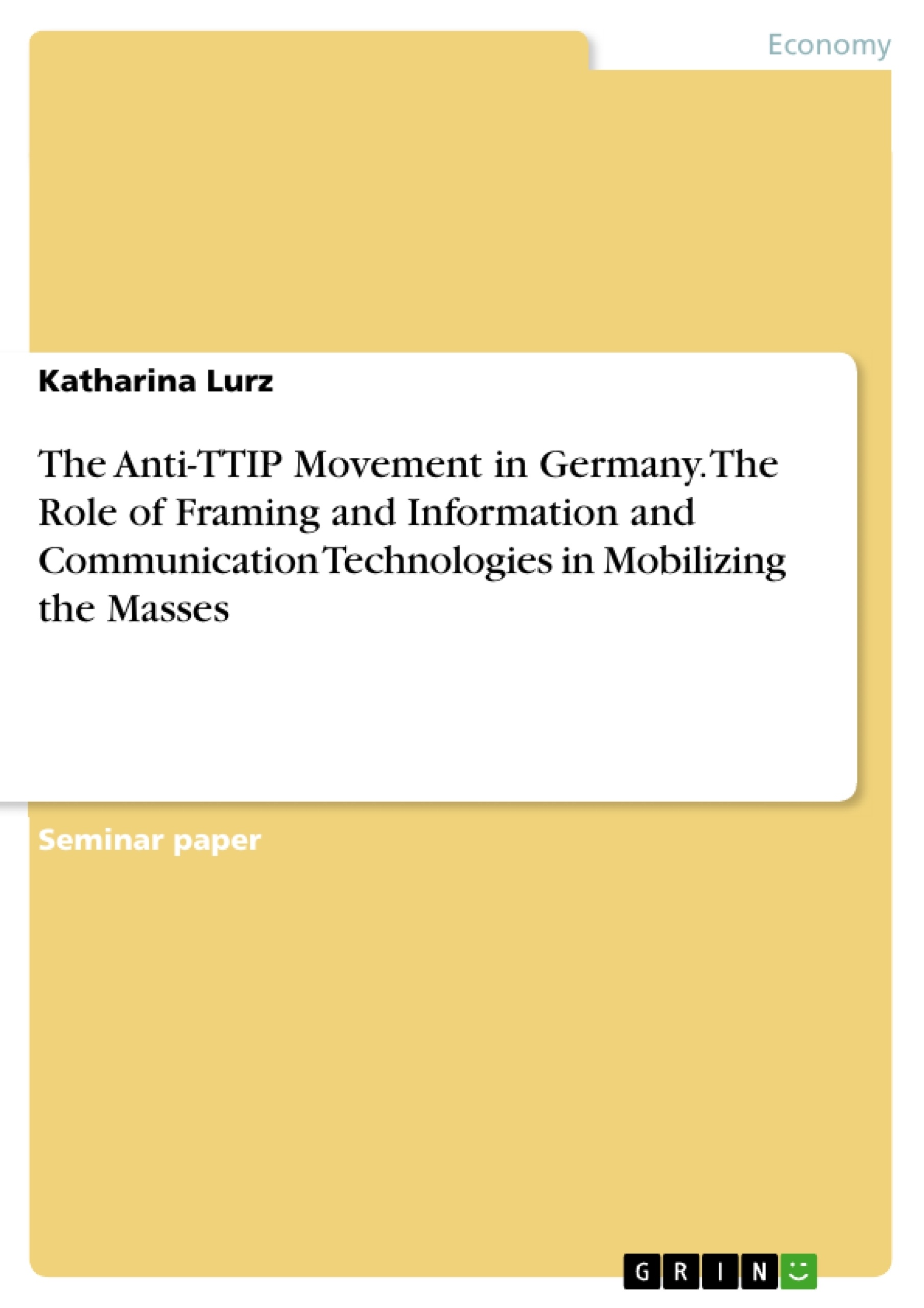This term paper will deal with the question how these anti-TTIP groups and contestants have managed to mobilize citizens to such extents as international trade deals are not traditionally on the public agenda. I argue that these organizations, such as Campact, Attac, and Mehr Demokratie, succeeded because they framed the issue in a way that struck a chord with the general public and the sensational online community which also tapped into existing narratives of anti-globalization and distrust towards the establishment, and because they made efficient and extensive use of new media technologies to spread these frames. The focus will thus be on investigating the different framing techniques and processes that were applied by the movement as well as its inherent structure and how these factors were combined with the use of online media in an effort to challenge the European Commission of the trade deal. With this combination of successful framing and use of online media they have managed to create an extensive base for protests against TTIP and CETA that has stifled the negotiations and final ratification for three years by now. In this regard, this paper will first elaborate on the different framing techniques that were applied by the protest leaders in light of existing narratives and discourses. Following, I will take a closer look at important NGOs such as Attac and Campact
and protest groups such as Stop TTIP and TTIP unfairhandelbar [TTIP non-negotiable] and their successes in organizing and getting people onto the streets. Subsequent will be an examination of their use of online media and social media platforms that were employed to distribute these frames and mobilize the masses.
Inhaltsverzeichnis (Table of Contents)
- Introduction
- Framing a Non-Negotiable TTIP
- Collective Action Frames in the Anti-TTIP Movement
- Framing Processes in the Anti-TTIP Movement
- The Role of Organization and Campaigning in the Anti-TTIP Movement
- The Internal Structure of the Anti-TTIP Movement
- Mobilization and Strategies of Campaigning within the Anti-TTIP Movement
- Conclusion
- References
Zielsetzung und Themenschwerpunkte (Objectives and Key Themes)
This paper aims to investigate how anti-TTIP groups managed to mobilize citizens to protest against the Transatlantic Trade and Investment Partnership (TTIP). It focuses on the success of organizations like Campact, Attac, and Mehr Demokratie in framing the issue in a way that resonated with the public. The paper examines the use of online media and framing techniques employed by the movement to create an extensive base for protests and challenge the European Commission's negotiation of the trade deal.
- Framing of TTIP as a threat to public interests, such as environmental protection and consumer rights
- The role of online media and social media platforms in mobilizing protests
- The effectiveness of framing techniques in influencing public opinion
- The impact of the anti-TTIP movement on the negotiation process
- The importance of collective action frames in uniting disparate groups and achieving common goals
Zusammenfassung der Kapitel (Chapter Summaries)
Chapter 1 provides an overview of the anti-TTIP movement in Germany, highlighting the scale of protests and the surprising level of public opposition to the trade agreement. It sets the stage for the subsequent chapters by introducing the key players and the context of the movement's emergence.
Chapter 2 delves into the framing of TTIP by its opponents, drawing upon Benford and Snow's research on collective action frames and framing processes. It examines how these frames are used to create a shared understanding of the issue and to inspire action among the movement's supporters.
Schlüsselwörter (Keywords)
The key themes and concepts explored in this paper include the anti-TTIP movement, framing techniques, online media, collective action frames, public mobilization, and the role of non-governmental organizations in shaping public discourse and influencing policy decisions.
- Arbeit zitieren
- Katharina Lurz (Autor:in), 2017, The Anti-TTIP Movement in Germany. The Role of Framing and Information and Communication Technologies in Mobilizing the Masses, München, GRIN Verlag, https://www.hausarbeiten.de/document/432061


